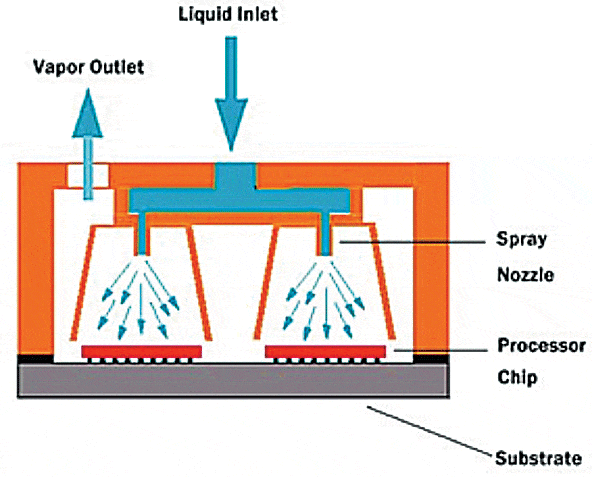A friend of mine who was an aspiring plumber once stated that all you need to know to be a plumber is that you get paid on Friday and that waste flows downhill. Maybe there is a similar analogy for thermal engineers that regardless of when we get paid, thermal energy will flow in the direction of decreasing temperature. The direction of heat flow with respect to temperature gradients makes for an easy fact but it is a fairy tale that electronics cooling systems are always inherently simple. Designers of electronics cooling systems have a wide variety of technologies and hardware to consider and understand. When faced with a challenging design problem a good practice is to research alternative techniques that have advantages such as the ability to shrink the packaging size or support higher heat flux levels among other factors. Technical papers such as those in this magazine can help the designer understand these technologies and design options. However, the decision to use the more advanced techniques and hardware is often more complicated. I am often asked why our electronics cooling design for a particular product doesn’t use xxx where xxx might be two-phase cooling, thin film thermoelectric, or IC microchannels for example. The reason some of these techniques are not widely used isn’t because they do not have good thermal characteristics or because we don’t have smarter thermal engineers. They just may not be the best choice at the system level.
The need to understand the system impact became evident to me when I was trying to use some thin thermoelectric coolers in a design to reduce local temperature gradients on some relatively low powered devices. While the addition of a thermoelectric cooler showed a thermal improvement compared to the original design, we had to allocate volume and interconnects for supplying a separate voltage for the coolers. A more fair comparison was to trade the thermal performance that would exist if this volume was used for thermal management with other approaches such as a high conductivity heat spreader. When examined at this level, the benefits of adding the thermoelectric cooler were minimal.


A second example is shown in Figure 2 which illustrates a representative spray cooling concept from an overview article on chip cooling techniques beyond air. The system implications of implementing two-phase cooling can be significant. Figure 3 is a simplified diagram of a closed loop cooling system where the cooled electronics are represented by the box on the right side. While some of the other items are obvious, a complete implementation trade must consider filtration, maintenance, the size of the condenser, potential need to restrict orientation, etc. Specifically for two-phase with multiple heat sources, the system trade must also include the complexity of manifolding and controlling the flow to the different heat sources. The answer may still be that the more advanced cooling technique, such as spray cooling, is the right answer, but it is important that the full trade space be examined.
Sometimes the focus on just the chip cooling technology is driven by academic interests that fulfill the need to fully understand the process. Other times this focus can be marketing driven where the benefits of the advanced cooling technique are highlighted but potential complexities of implementing the technologies are minimized because they detract from the intended message. My reminder to the readers is to consider the complete electronics cooling system and the necessary other components that go along with a particular cooling technique.
REFERENCES
1. Colgan,E., et al, “A Practical Implementation of Silicon Microchannel Coolers”, Electronics Cooling, Nov 2007
2. Simons and Ellsworth, “High Powered Chip Cooling — Air and Beyond”, Electronics Cooling, Aug 2005







